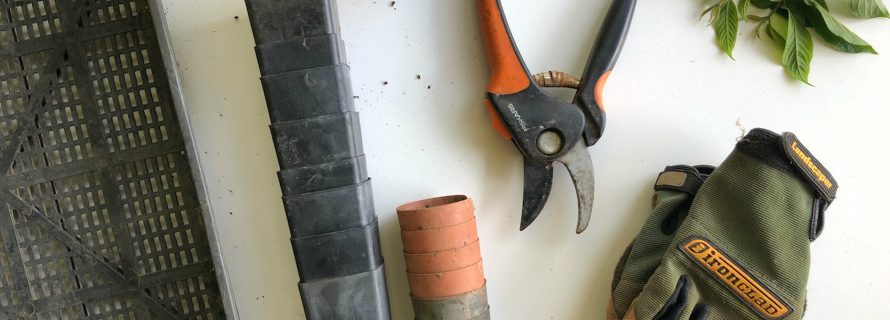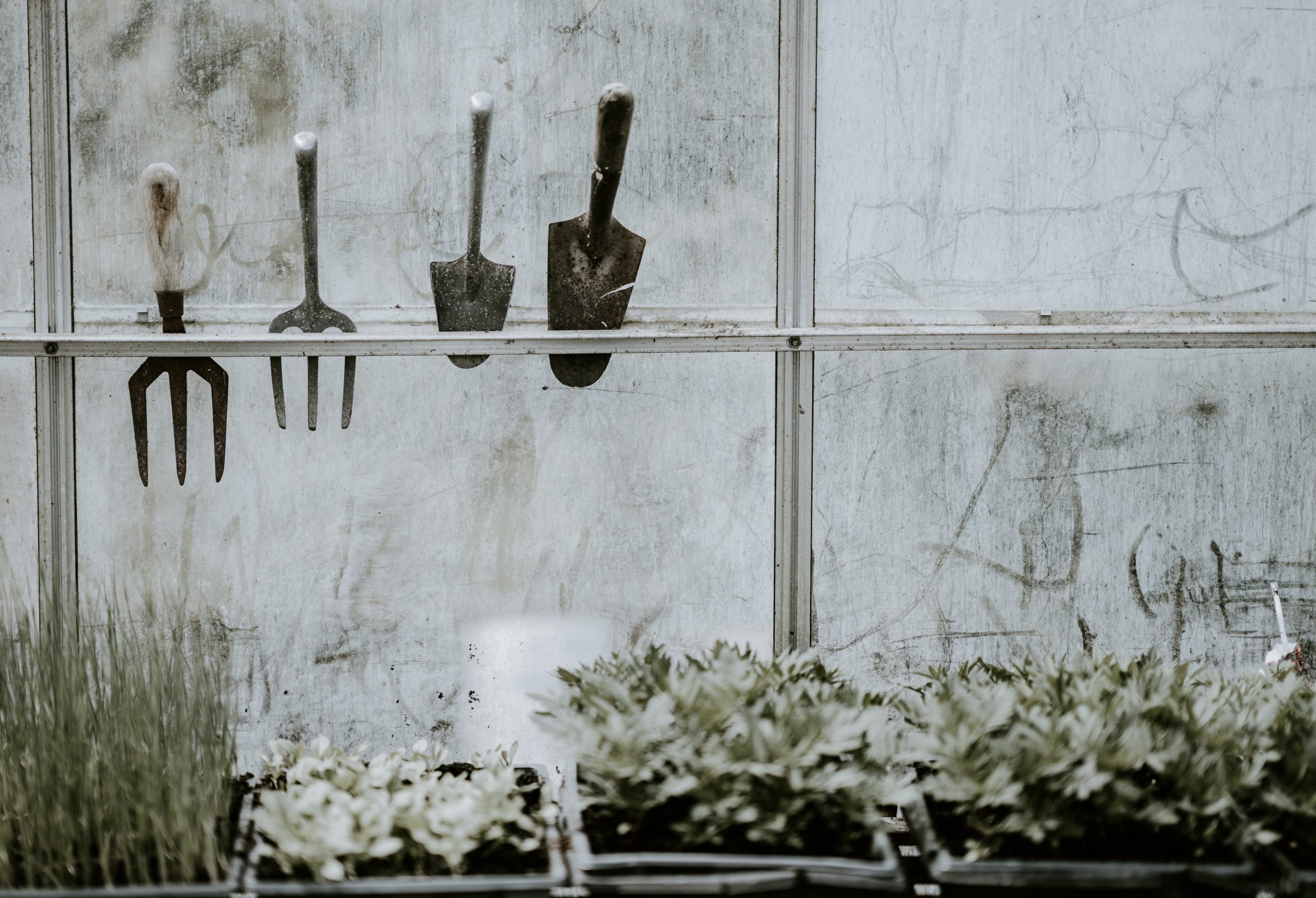How to Disinfect Gardening Tools

One of the best ways of keeping your garden free from disease-causing pathogens is by cleaning and disinfecting your gardening tools. All gardening tools used for trimming, digging, pruning, or removing weeds should be disinfected consistently to prevent the spread of diseases and pests. There are several methods and products that you can use to disinfect your tools and other gardening surfaces.
Before you start to disinfect, make sure that the tools are clean to ensure that the disinfectant will come into contact with the entire tool surface. Ensure you remove any dirt or debris with clean water. You can use your garden hose to remove stubborn grime.
If you still have a problem washing off dirt and debris from the tools, you can use a scraping tool such as a caulking knife or a stiff wire brush to scrub the tools. You can then sap the tools with a paper towel or damp cloth then proceed with the process of disinfection.
Methods of disinfecting gardening tools
- i. Using household disinfectants
The first method you can use to disinfect your gardening tools is by using household disinfectants, the common one being Lysol. Household disinfectants are easily accessible, and most are not highly corrosive compared to other disinfectants and bleaches.
To disinfect, you’ll need to dip your tools in a bucket full a disinfectant of your choice and let them soak for a couple of minutes before you remove them. On the downside, these disinfectants are somewhat expensive when compared to most horticultural disinfectants, and very little research has been done regarding their effectiveness on gardening tools.
- ii. Disinfectant wipes
Other than using household disinfectants, you can also use disposable disinfectant wipes, which are generally offered in most gardening stores. There are also general-purpose wipes, which include Clorox and Lysol wipes that you can use to wipe your tools, but they’re not as effective. You’ll need to dispose of the wipe after every use.
- iii. Using a liquid bleach
Bleach is generally an inexpensive garden tool disinfectant. Chlorine is the most commonly used bleach since it is effective and easily accessible. To use liquid bleach, you’ll need to mix nine parts water with one part bleach then dip your gardening tools in the mixture. Let the tools soak for about 30 minutes, and then remove them and allow them to drain off. Ensure you rinse the tool with clean water to prevent corrosion.
This solution has a limited lifespan, so you will need to make a fresh batch for each round of cleaning and disinfecting, usually after every two hours. It is not uncommon to find some gardeners dipping their tools, especially pruner blades in a bleach and water mixture in between cuts. You should, however, ensure you wipe the tools after dipping them in the solution to avoid damaging the next plant.
On the downside, bleach is highly corrosive and can cause damage to surfaces and clothing. Also, it can irritate your skin and, it can cause severe injuries to your lungs if inhaled. As such, you should always wear protective gear when disinfecting your tools with liquid bleach.
- iv. Industrial disinfectants
Industrial-grade disinfectants are majorly used when you have plant diseases, and you want to prevent the problem from recurring or spreading. The disinfectants are formulated to kill plant pathogens immediately on contact. There are many varieties of these disinfectants, but the common ones are hydrogen peroxide-based disinfectants and quats or q-salts. The quats are labeled for use in controlling bacterial, viral, and fungal plant pathogens. At the same time, their hydrogen peroxide counterparts are generally useful in disinfecting various surfaces, including greenhouse surfaces as well as tools and equipment.

- v. Use of 70% isopropyl alcohol
Isopropyl alcohol is a non-corrosive product that most gardeners use to disinfect their tools. You’ll need to dip the tools you need to disinfect in the alcohol, which is effective immediately on contact, and then remove them to allow them to dry. You don’t have to rinse the tools. Alternatively, you can wet a piece of cloth with the alcohol and use it to wipe down the tools.
Like other flammable products, ensure that you don’t use the alcohol around a flame or any strong heat source. In addition, you can also use ethanol instead of isopropyl. The good thing about using these alcohols is that they can be used directly from the bottle without prolonged soaking. Moreover, ethanol, in particular, can be used without dilution, thus making your work easier.
- vi. Pine oil disinfectants
These are yet other multi-purpose disinfectants, and they are readily available in most home improvement centers, groceries, and hardware stores. One part of pine oil should be mixed with three parts of water then soak your tools in the mixture. And although pine oil is non-corrosive, it is not as effective as bleach or industrial disinfectants for disinfecting critical tools such as mower blades.
- vii. Trisodium Phosphates-based products
Products containing Trisodium Phosphates (TPSs) are generally used as heavy-duty and all-purpose cleaners for various surfaces in preparation for painting. There are also synthetic TPS products that can be used for tool disinfecting. Like the liquid bleach, one part of the product should be mixed with nine parts of water to make a 10% solution. Always wear protective gloves to prevent skin contact with the solution. Soak your tools for about three minutes before rinsing them and leaving them to dry. The soaking time may, however, limit the usefulness of these products in between jobs such as during pruning.
Conclusion
Regardless of the method you choose, being consistent in keeping your tools clean and disinfected is critical in keeping your garden healthy. Also, it would be a good idea to disinfect your tools regularly if you are working on diseased plants, generally after every use. This will help contain the disease and prevent it from spreading between plants. If possible, have several tools in handy so that while one is being disinfected, you can work with the other one.
About The Author: William Phillips was born and raised in Keller, Texas. He is a licensed general contractor, and he has been a home improvement specialist for two decades. His passion for the trade led him to freelance writing to share his life experiences with his readers. Phillips enjoys thoroughly researching DIY tools and writing guides at ToolsHaunt as a way of giving back to the community.
Photos by Eco Warrior Princess on Unsplash & Annie Spratt on Unsplash
- Additions and New Construction
- All Exteriors
- Alterations
- Basements
- Bathrooms
- Customer Service
- Customer Stories
- Decks
- Design & Planning Show
- DIY
- Doors
- Educational Resources
- Extreme Makeover Home Edition
- Fashion Show
- General Remodeling
- Green Living
- Handyman Home Services
- Home Decor
- Home Entertainment
- Home Improvement
- Home Improvements
- How to Tips
- In The Community
- Kitchens
- Off-the-Wall Remodeling Stories
- Remodeling
- Resources
- Roofing
- Siding
- Social Media
- Sunrooms
- Tips & Tricks
- Trends
- Windows

